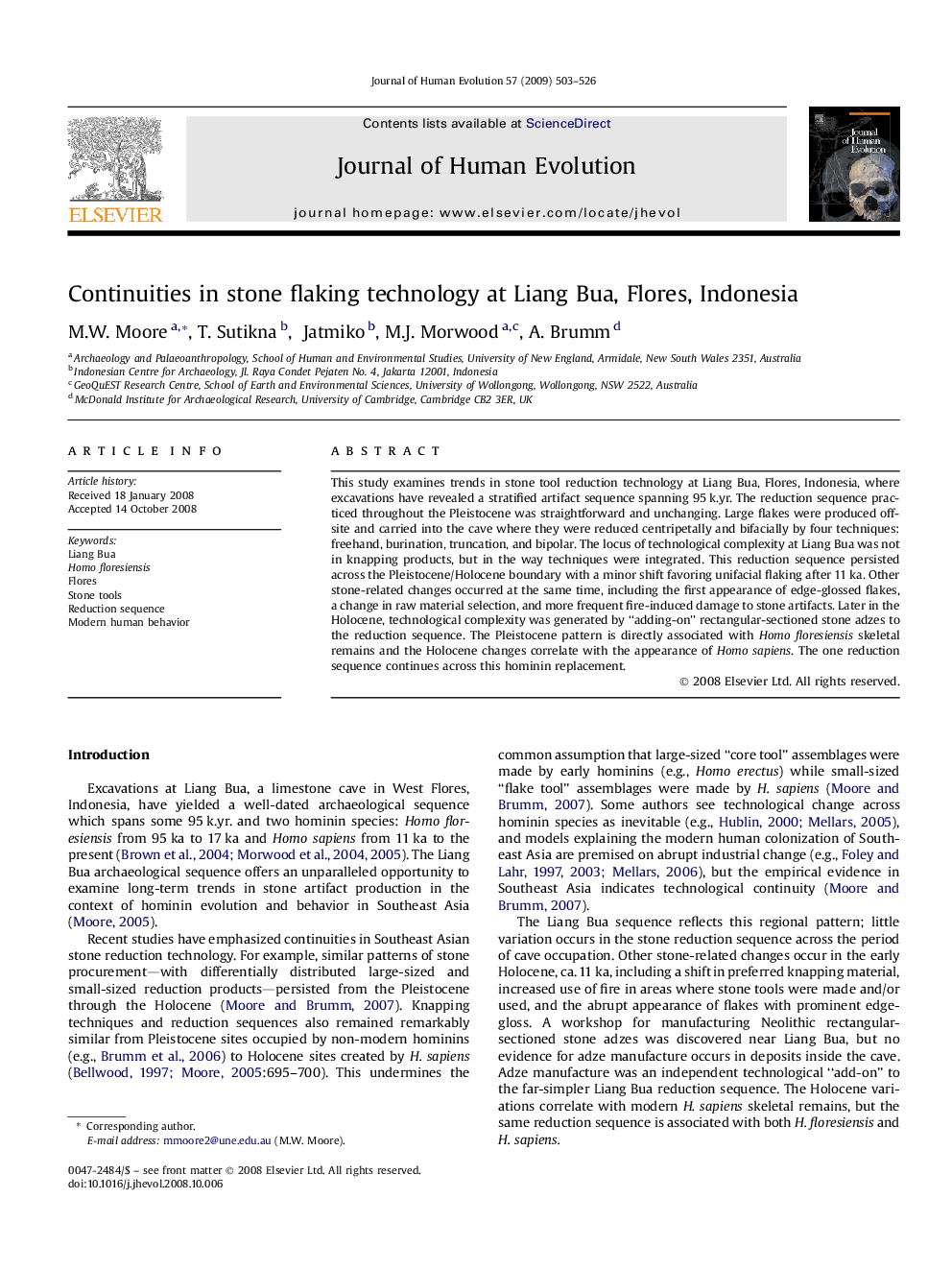| کد مقاله | کد نشریه | سال انتشار | مقاله انگلیسی | نسخه تمام متن |
|---|---|---|---|---|
| 4556986 | 1329517 | 2009 | 24 صفحه PDF | دانلود رایگان |

This study examines trends in stone tool reduction technology at Liang Bua, Flores, Indonesia, where excavations have revealed a stratified artifact sequence spanning 95 k.yr. The reduction sequence practiced throughout the Pleistocene was straightforward and unchanging. Large flakes were produced off-site and carried into the cave where they were reduced centripetally and bifacially by four techniques: freehand, burination, truncation, and bipolar. The locus of technological complexity at Liang Bua was not in knapping products, but in the way techniques were integrated. This reduction sequence persisted across the Pleistocene/Holocene boundary with a minor shift favoring unifacial flaking after 11 ka. Other stone-related changes occurred at the same time, including the first appearance of edge-glossed flakes, a change in raw material selection, and more frequent fire-induced damage to stone artifacts. Later in the Holocene, technological complexity was generated by “adding-on” rectangular-sectioned stone adzes to the reduction sequence. The Pleistocene pattern is directly associated with Homo floresiensis skeletal remains and the Holocene changes correlate with the appearance of Homo sapiens. The one reduction sequence continues across this hominin replacement.
Journal: Journal of Human Evolution - Volume 57, Issue 5, November 2009, Pages 503–526